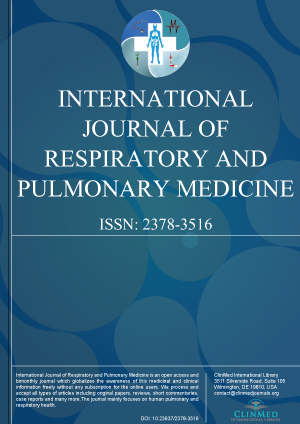Open Access DOI:10.23937/2378-3516/1410007
Eicosapentaenoic Acid Decreases Histamine Receptor 1 Expression on Lung Microvascular Endothelial Cells and Cell Permeability during LPS Stimulation
Takaaki Osako, Michiko Aoyama-Ishikawa, Hayato Yamashita, Makoto Usami, Atsunori Nakao and Joji Kotani
Article Type: Original Article | First Published: December 26, 2014
Introduction: During acute lung inflammation, the lung microvasculature becomes hyperpermeable, resulting in immune cell infiltration and tissue edema. N-3 polyunsaturated fatty acids (PUFAs), when used as a supplement in parenteral nutrition, can attenuate Lipopolysaccharide (LPS)-induced lung injury. In this study, we examined the effects n-3 PUFAs on lung microvascular cell permeability. Material and methods: Human lung microvascular endothelial cells (HMVEC-L) were seeded on fibronectin-coat...
Open Access DOI:10.23937/2378-3516/1410006
Infective Endarteritis in a Patent Ductus Arteriosus
John Fani Srour
Article Type: Case Report | First Published: December 15, 2014
The ductus arteriosus, an essential fetal structure, normally closes spontaneously soon after birth. It's persistence into late adulthood is considered rare; infective endarteritis complicating a patent ductus arteriosus (PDA) is an even rarer event. The clinical picture of an infected PDA could be subtle, and the diagnosis is frequently delayed. Symptoms may well be attributed to community acquired pneumonia, pleurisy, or pulmonary infarction from pulmonary embolism. Occasionally, especially in...
Open Access DOI:10.23937/2378-3516/1410005
The Differential Diagnosis of Asthma: Endobronchial Pulmonary Mesenchymoma
Mehmet Unlu, Pinar Cimen, Nuran Katgi and Salih Zeki Guclu
Article Type: Case Report | First Published: December 06, 2014
A variety of airway tumours are reported to manifest with symptoms similar to those of asthma and may cause delays in exact diagnosis because of the increase in size at a slow rate. Pulmonary endobronchial mesenchymoma is one of the slow growing tumours which is associated with symptoms or signs of airway obstruction mimicking asthma. So, patients with chronic symptoms suggestive of asthma, poor response to asthma medications, and frequent exacerbations should be evaluated for endobronchial mese...
Open Access DOI:10.23937/2378-3516/1410003
Functional Characteristics of COPD Patients Admitted for Acute Pulmonary Embolism
Rodriguez DA, Orozco-Levi M, Miranda F, Mayoral A, Clements JA, Martinez-Llorens J, Ventin C, Bruguera J, Gea J and Molina LL
Article Type: Research Article | First Published: September 10, 2014
Introduction: Chronic Obstructive Pulmonary Disease (COPD) is a known risk factor for pulmonary embolism (PE); however, neither the clinical nor the pulmonary function characteristics are well described in COPD patients admitted for PE. Methods: We conducted a retrospective cohort study of 395 patients admitted for acute PE in a tertiary hospital setting. In COPD patients, clinical characteristics and pulmonary function were compared between the survivor and non-survivor groups during a 3-month ...
Open Access DOI:10.23937/2378-3516/1410001
Should Endobronchial Ultrasound be Performed in All Patients with Suspected Sarcoidosis?
Omar Assasa, Mohamed Omballi and Fayez Kheir
Article Type: Editorial | First Published: August 06, 2014
Sarcoidosis is a multisystem inflammatory disease of unknown etiology that is characterized by noncaseating granuloma. Its incidence is 11 cases per 100,000 population in whites and 34 cases per 100,000 population in African Americans. Sarcoidosis most often involves the lung and intrathoracic lymph nodes but can occur in any other organ system. The most common respiratory complaints are dyspnea, shortness of breath and wheezing. However, many patients are asymptomatic and have incidental enlarg...

